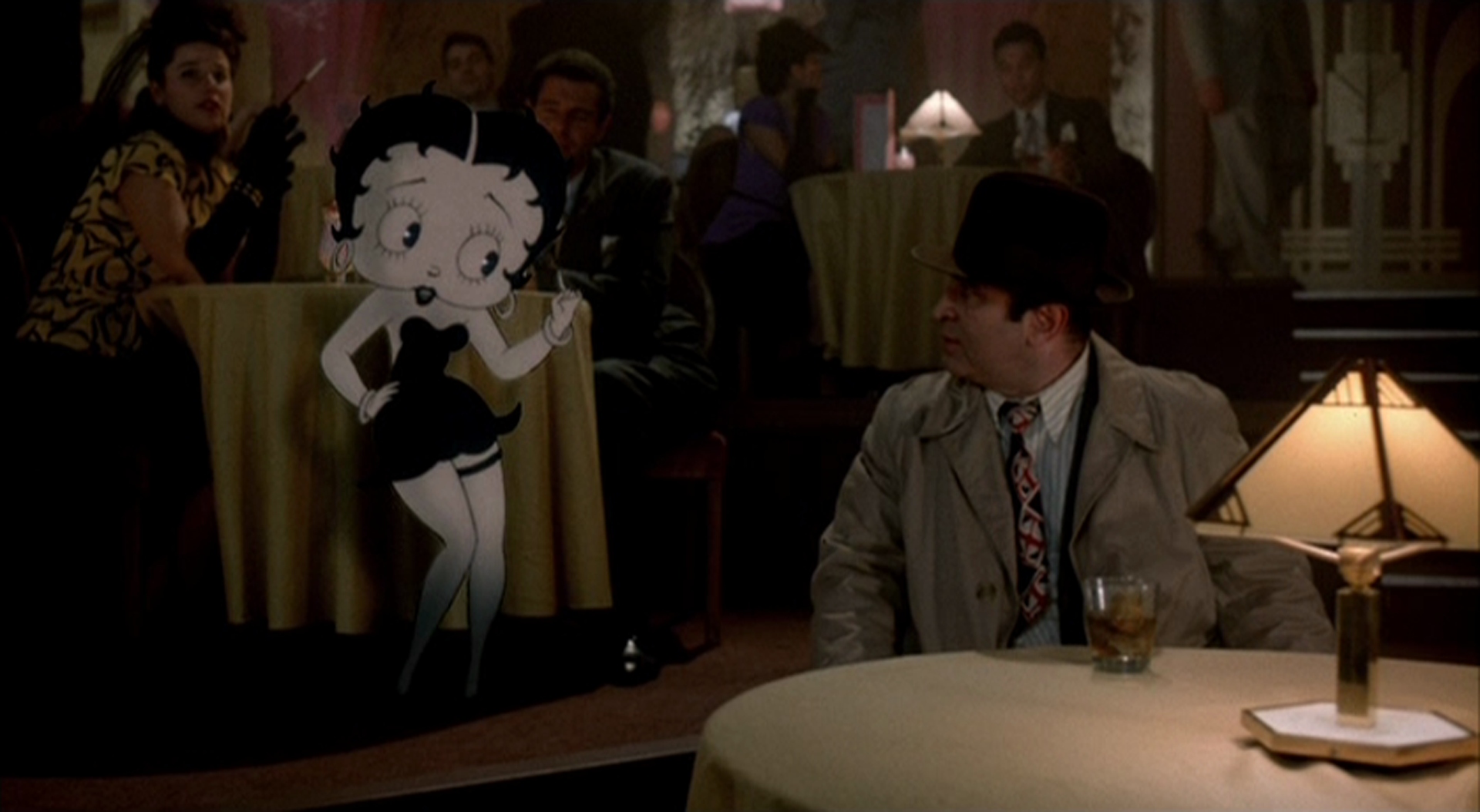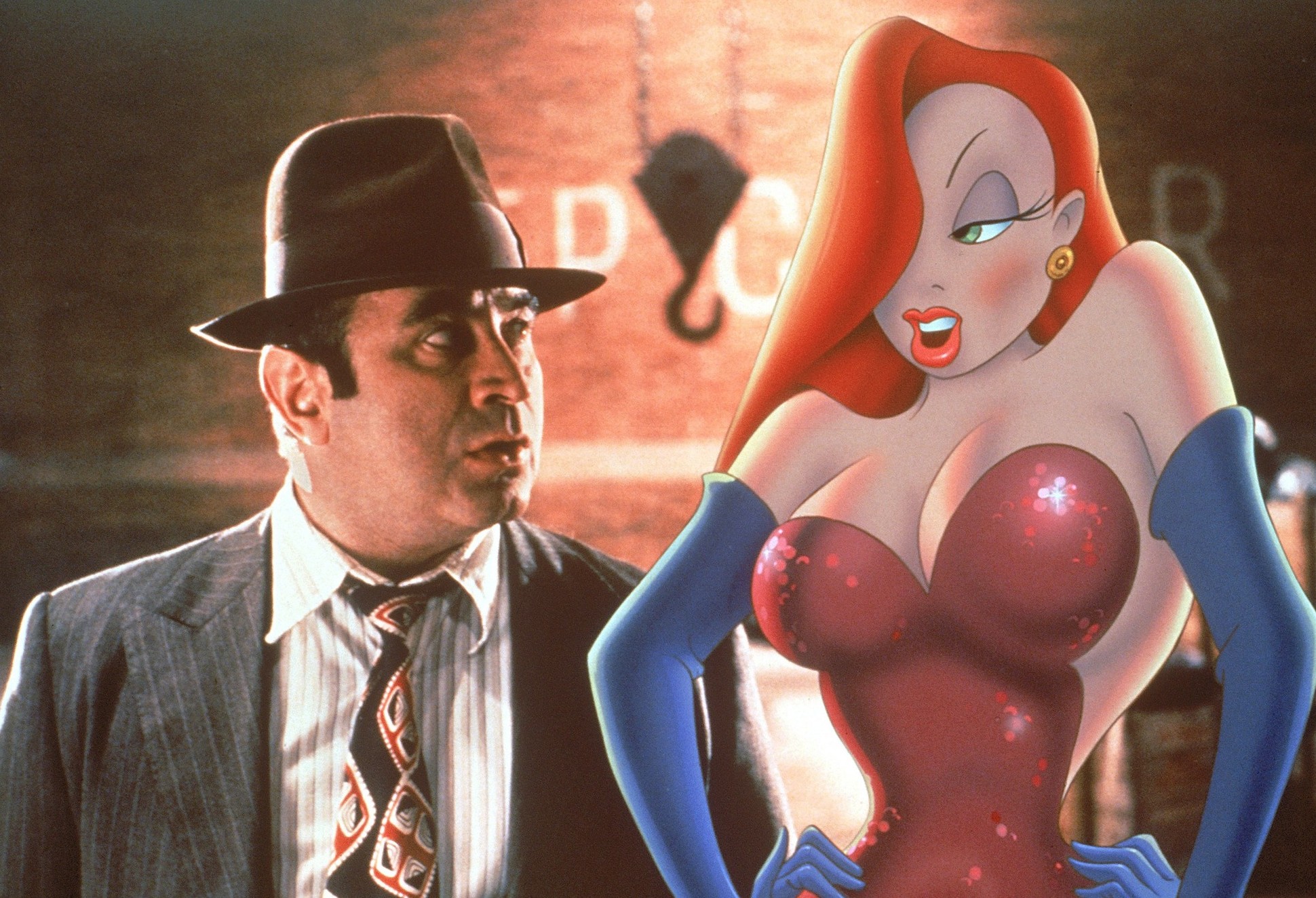In February 2014, animator and director Rob Minkoff talked to Den Of Geek about his new film, Mr. Peabody & Sherman. Asked what kind of career options led to him switching back and forth between live-action and animation, he mentioned that he’d been tapped to direct the animation for Who Framed Roger Rabbit 2—just after he directed two stand-alone Roger Rabbit shorts, which came out in 1989 and 1990. Disney had a script in hand, and Minkoff was hired on to help develop the project. He says he worked on it for a year or so before it was shelved, and he went on to co-direct 1994’s The Lion King.
All of which means that at this point, the theoretical sequel to 1988’s Who Framed Roger Rabbit has been in one stage or another of planning for nearly 25 years. So what’s the holdup? The original movie won three Oscars (for editing, sound editing, and visual effects) and was nominated for three more. It was an immense box-office hit in its day, and an enduring home-video seller that’s still routinely cited on best-of lists—for the 1980s, for animation, for 20th-century feature filmmaking in general. In today’s studio landscape, which seems to have a boundless appetite for franchises, for nostalgia and name recognition, for marketability and possible toy lines, and for CGI spectacles, a second Roger Rabbit movie seems like a no-brainer. Given the original’s lively use of familiar Disney characters, a sequel would even fit into Disney’s current “brand deposit” strategy of films that tap into nostalgia for Disney’s past, and inspire viewers to check back in on old favorites. Roger Rabbit director Robert Zemeckis has been on board from the beginning, and so were key talents like the film’s writers, and its stars, Bob Hoskins and Charles Fleischer.
So again: What’s the holdup? There are obvious aesthetic/creative answers—maybe the many scripts that have circulated over the past couple of decades don’t live up to the original. The original movie’s achievement was spectacular in its day, to a degree that would be hard to top in an age where onscreen digital wonders have become common. Nothing about Roger Rabbit’s plot calls for a sequel, and a subpar spinoff might tarnish the reputation of the original film. But Hollywood has shrugged off these considerations before, when the siren song of money called. And there’s an awful lot of potential money in Roger Rabbit 2, now that the first generation of kids who grew up stunned by the original film are old enough to be hauling their own kids to the movies.
The easiest answer is that the making of the film was an immense financial and technological gamble that could have easily failed to pay off, and the huge trials involved in bringing the first film to the screen would be enough to put off any studio or outside investor. In its day, Roger Rabbit was filmmaking on an unprecedented scale. Multiple technologies had to be invented to make the effects work. Greenlit as a $30 million film, it eventually cost $70 million to make, in an era long before $100 million blockbusters became standard. It came close to shutdown numerous times, especially as the production schedule kept stretching further, as test audiences rejected the early cuts without completed animation, and as Zemeckis realized it was impossible to edit the film to use different takes or lines, since the animation in progress was all built around his initial cut. Live actors and animation had been mixed before, from Gertie The Dinosaur to Fantasia to Anchors Aweigh to Pete’s Dragon, but never in this way, with animated characters seamlessly, tangibly interacting with physical actors and objects, or on this scale, with most of the film focused on animated stars. In retrospect, it’s one of those productions that’s astonishing not just because of what ended up on the screen, but because it ever made it to the screen at all.

Who Framed Roger Rabbit was inspired by, and just barely based on, Gary K. Wolf’s 1981 comic pastiche novel Who Censored Roger Rabbit? The film version keeps Wolf’s characters and the hardboiled crime-novel tone, but not much else; screenwriters Jeffrey Price and Peter S. Seaman invented antagonist Judge Doom (played by Christopher Lloyd) and his entire sinister plot to destroy Hollywood’s community of living animated characters to make way for a freeway. They were inspired by 1974’s Chinatown, but also by classic animation, from Disney films to Tex Avery cartoons. The film’s plot, which has jaded, morose private eye Eddie Valiant (Hoskins) reluctantly drawn into a murder case involving stuttering, giddy animated bunny Roger Rabbit (voiced by Fleischer), is pure classic noir, right down to the femme fatale pushing the PI around, and looking at every moment like a double-cross on two sexy legs. (Roger’s wife Jessica, voiced by Kathleen Turner.) But the animation is Disney Golden Age meets Bob Clampett, with Zemeckis’ own spin attached. And Zemeckis wanted the animation to live up to the best of his inspirations—to a smoothness and quality of animation that had fallen out of favor in the 1980s.
Zemeckis’ entire career has been based around envelope-pushing special effects—Michael J. Fox’s multiple simultaneous onscreen roles in Back To The Future II; Gary Sinise’s green-screened missing legs in Forrest Gump; the holed and broken, yet still ambulatory bodies in Death Becomes Her; and so forth. His vision for Roger Rabbit started with animated characters doing impossible things—firing real guns, smashing through real walls, holding up real bottles and trays and papers. And it went on to include new kinds of animation, where the ink-and-paint characters had enough subtle shading and rich highlights to look three-dimensional, and to fit seamlessly into a live-action world.
Lacking any form of computer compositing, Zemeckis shot his live-action content (in VistaVision, to compensate for the fact that putting the frames through the optical camera to add the animation would shrink the image slightly) and edited it into a complete movie. His effects team built responsive robot armatures to carry physical items around the set, or flew them around on puppeteers’ wires, because human actors carrying things would have taken up too much space to be rotoscoped over later. Once he had a complete movie, he had every frame of the film turned into a black-and-white photo for the animators’ reference. Every animated image in the film—around 82,000 cels in all—is hand-drawn. Then the highlights and shadows were painted onto separate cels, a backlit matte was generated to separate the animation from the background, and those four levels for each individual frame were sent to Industrial Light And Magic to be manually combined with an optical camera. In one making-of featurette on the 25th-anniversary Blu-ray of Roger Rabbit, ILM camera operator Jon Alexander talks about how this process was unprecedented for the time; it involved more than three times as much compositing work as the studio’s previous biggest special-effect project, Return Of The Jedi.

The animation process was painstakingly slow and expensive, and according to the Blu-ray commentary track (featuring Zemeckis, the writers, producers Frank Marshall and Steve Starkey, and visual-effects supervisor Ken Ralston), it involved rounding up every available animator in the industry, bringing in people from France, Germany, and Iceland in addition to the American and British crew, and grabbing every art student in London to help paint the cels. Marshall says Disney’s original plan for the film involved no more than 12 minutes of animated content in the entire movie; Zemeckis’ version wound up with 54 minutes of animation, which ultimately had to be cut down to 48 because there simply weren’t enough animators to finish the job. (Among the things eliminated strictly for budget reasons: Judge Doom was originally supposed to have a toon vulture named Voltaire riding around on his shoulder, and he had two more weasel henchmen, with the full set of seven weasels envisioned as dark, perverse renditions of the Seven Dwarves.) And those animators had to figure out how to do things that had never been done in animation before: dealing with moving cameras, the difference between foreground and background focus, and changing focus on animated characters within a shot.
Zemeckis has been given much of the credit for holding Roger Rabbit together through all this: the massive time and budget overrun, the endless technological problems that needed to be solved, the constant studio questions about whether it would be possible to just scale back radically, or scrap the project before it became an even bigger loss. A vote of confidence from executive producer Steven Spielberg, who produced the film through Amblin Entertainment, is reportedly the major reason the production didn’t fold—and the major reason Disney was able to convince Warner Bros. to allow the film to bring in iconic animated characters like Bugs Bunny and Porky Pig, albeit under strict restrictions. These days, when people talk about what might be holding Roger Rabbit 2 back from production, the licensing deals involved in this kind of cross-studio cooperation come up more than anything else; the theory is that now, studios are more invested than ever in licensing and protecting their intellectual property, and that Roger Rabbit couldn’t possibly happen in the present legal environment.
But given that something very similar happened with Wreck-It Ralph, with Disney borrowing other companies’ beloved properties for cameos, and given that Spielberg is still a massive force in the industry, with enough clout to broker similar deals, and given Roger Rabbit’s groundbreaking reputation, that doesn’t seem like as much of a barrier as has been suggested. Zemeckis is still dedicated to technological innovation, but the animation effects his team had to invent are much easier to accomplish these days, with digital rendering and compositing. So much of Roger Rabbit’s technological innovation wouldn’t be necessary today, simply because it could all be done digitally. Zemeckis has even said—recently as part of his ongoing efforts to get Roger Rabbit 2 greenlit—that he’d want to do the sequel in the same way as the first film, mixing 2-D animation and live-action, rather than going all-CGI. So the tools seem to be in place. Zemeckis and Minkoff are in place. Zemeckis says a script by the original writers is in place.

And above all, Who Framed Roger Rabbit was part of an animation renaissance that continued with Disney’s The Little Mermaid and its followers, and the rise of Pixar and DreamWorks, and the immense wave of foreign imports that have pushed the field forward. In 1986, Disney had trouble pulling together the animation team to make this film happen. But because it did happen, and because it helped inspire a new generation of animators, Roger Rabbit 2 could in theory be made without (as that Blu-ray commentary suggests) having to scour the streets of London for “anyone who could hold a brush” to come help out. Sadly, if the sequel ever does get made, it’ll have to be made without Bob Hoskins, who died in April 2014. And it’d certainly be made without the crackpot “this has never been done before, and everyone says it can’t be done, but we’re going to do it anyway” vision that pulled the first one into being. If only for those two reasons, maybe it’s best to leave Roger Rabbit as one of those one-off cinematic miracles that may never be repeated. It’s hard to understand why Hollywood let it stand on its own this long. But it may be better that way—for Hoskins’ legacy, for the standout role the film has had in animation history, and for keeping the original pristine and singular in the collective memory.
Tomorrow, our Movie Of The Week forum digs into Who Framed Roger Rabbit’s plot, with its noir story, its extremely calculated choice of time and place, and its characters, from the familiar icons to the instant icons. And on Thursday, Matthew Dessem looks at an animated oddity from Roger Rabbit’s animation director, Richard Williams.

